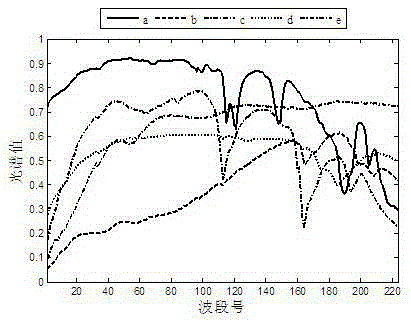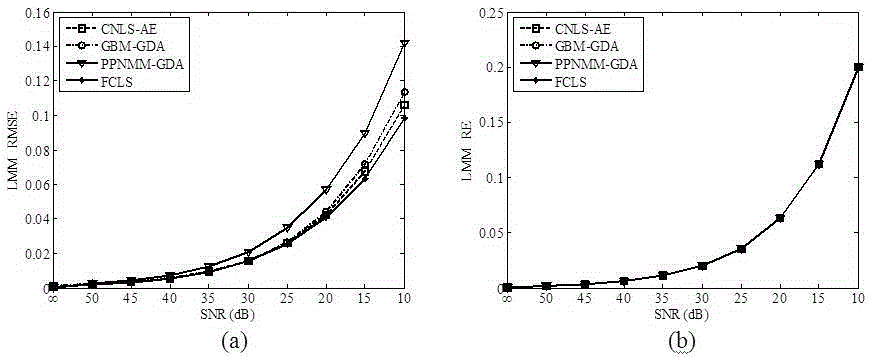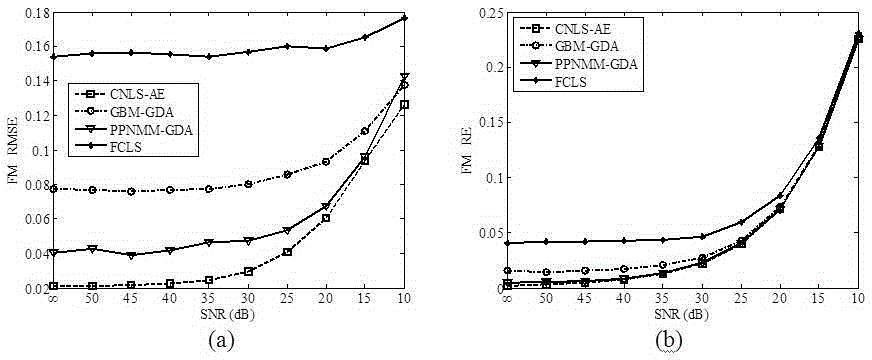A Nonlinear Abundance Estimation Method for Hyperspectral Images Based on Constrained Least Squares
A hyperspectral image and least squares technology, applied in the field of remote sensing image processing, can solve problems such as inaccurate results, and achieve the effects of good adaptability, good unmixing accuracy, anti-noise performance, and low computational complexity
- Summary
- Abstract
- Description
- Claims
- Application Information
AI Technical Summary
Problems solved by technology
Method used
Image
Examples
Embodiment Construction
[0089] Below, the specific embodiment of the present invention is illustrated with simulation data and actual remote sensing image data respectively:
[0090] The nonlinear abundance estimation method (algorithm) based on constrained least squares adopted in the present invention is represented by CNLS-AE.
[0091] 1. Simulation data experiment
[0092] In this section, we test the performance of the proposed algorithm on artificially generated simulation data. We compare the algorithm proposed in this paper with two gradient methods based on GBM and PPNMM, namely GBM-GDA and PPNMM-GDA algorithms mentioned in [7] and [8], respectively. In addition, we also compare with the better performance of the LMM-based FCLS algorithm [10].
[0093] We use root mean square error (RootMeanSquareError, RMSE) and reconstruction error (ReconstructionError, RE) to measure the pros and cons of abundance estimation algorithms. RMSE is used to measure how close the estimated result of the abun...
PUM
 Login to View More
Login to View More Abstract
Description
Claims
Application Information
 Login to View More
Login to View More - R&D
- Intellectual Property
- Life Sciences
- Materials
- Tech Scout
- Unparalleled Data Quality
- Higher Quality Content
- 60% Fewer Hallucinations
Browse by: Latest US Patents, China's latest patents, Technical Efficacy Thesaurus, Application Domain, Technology Topic, Popular Technical Reports.
© 2025 PatSnap. All rights reserved.Legal|Privacy policy|Modern Slavery Act Transparency Statement|Sitemap|About US| Contact US: help@patsnap.com



